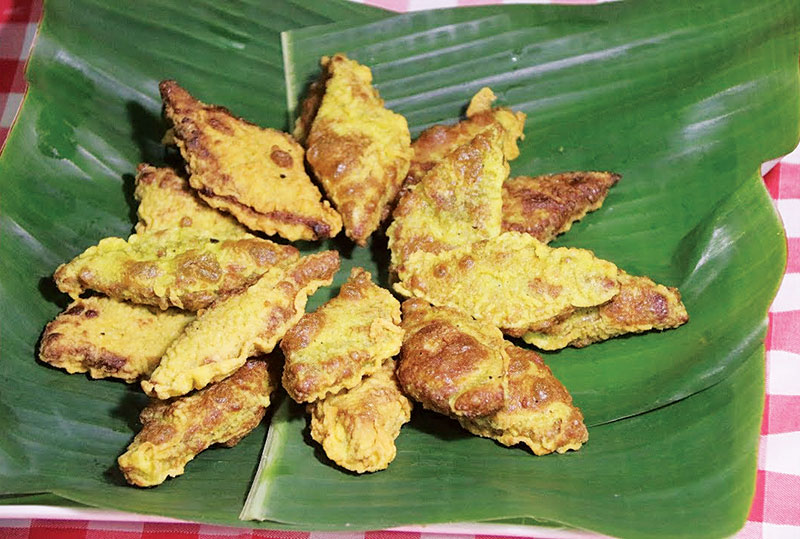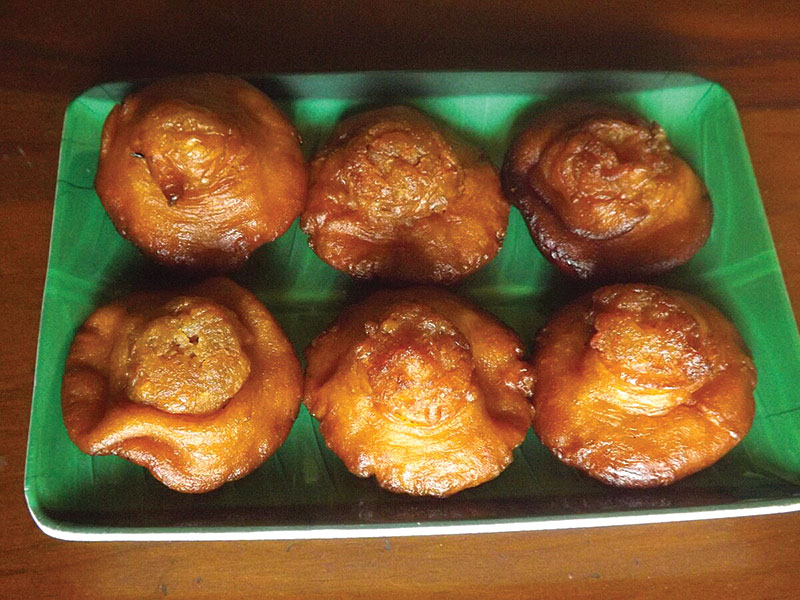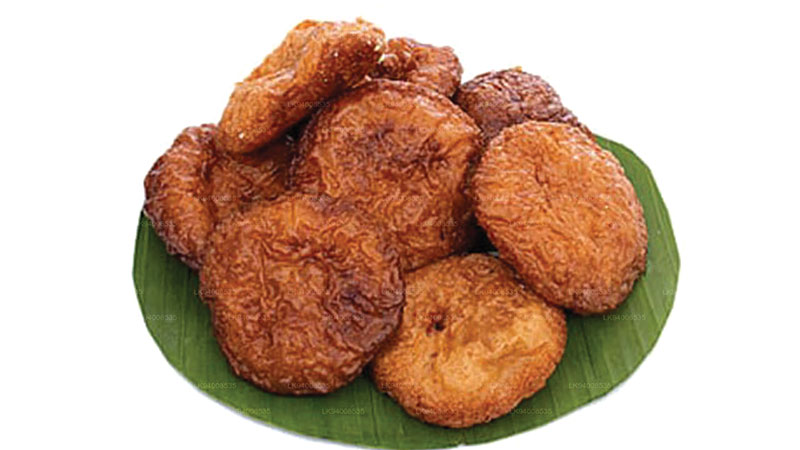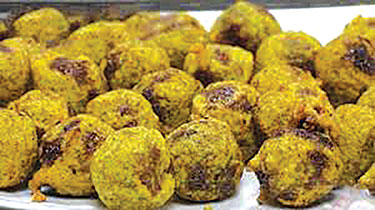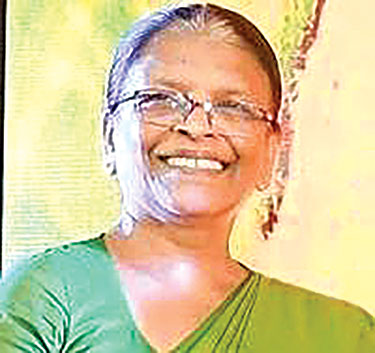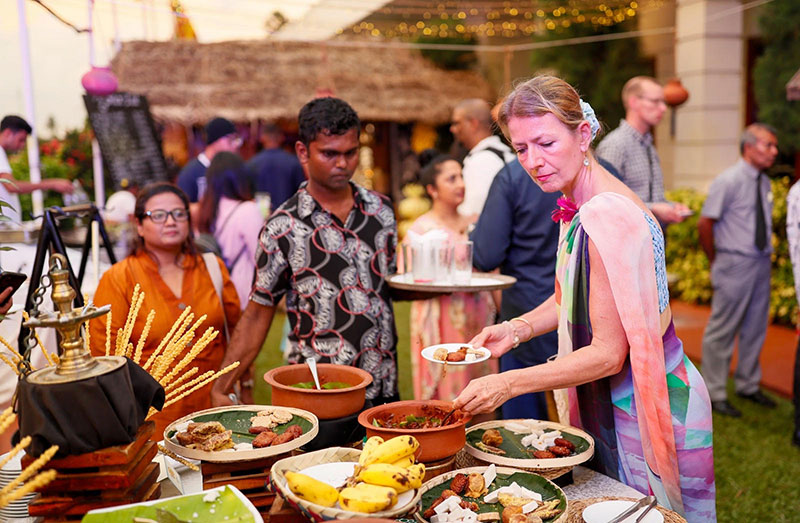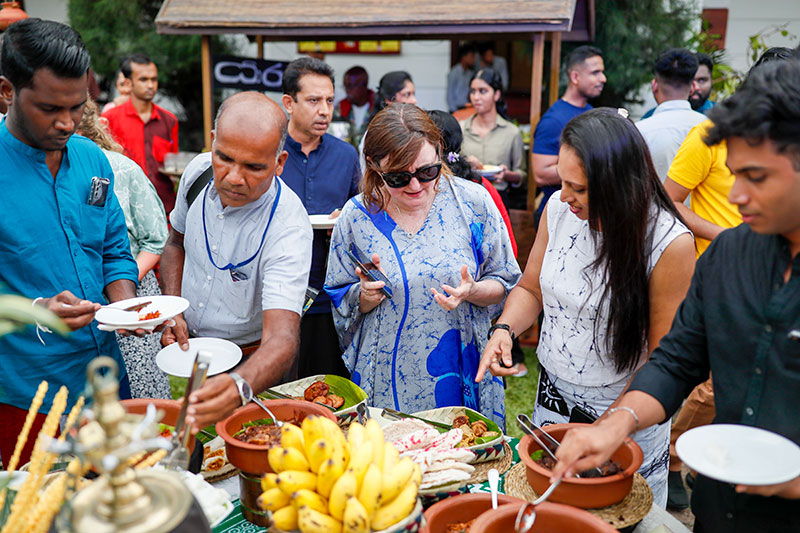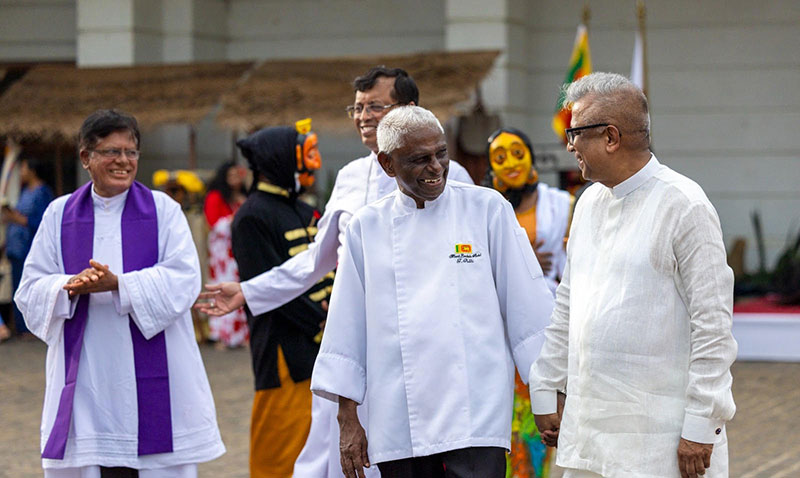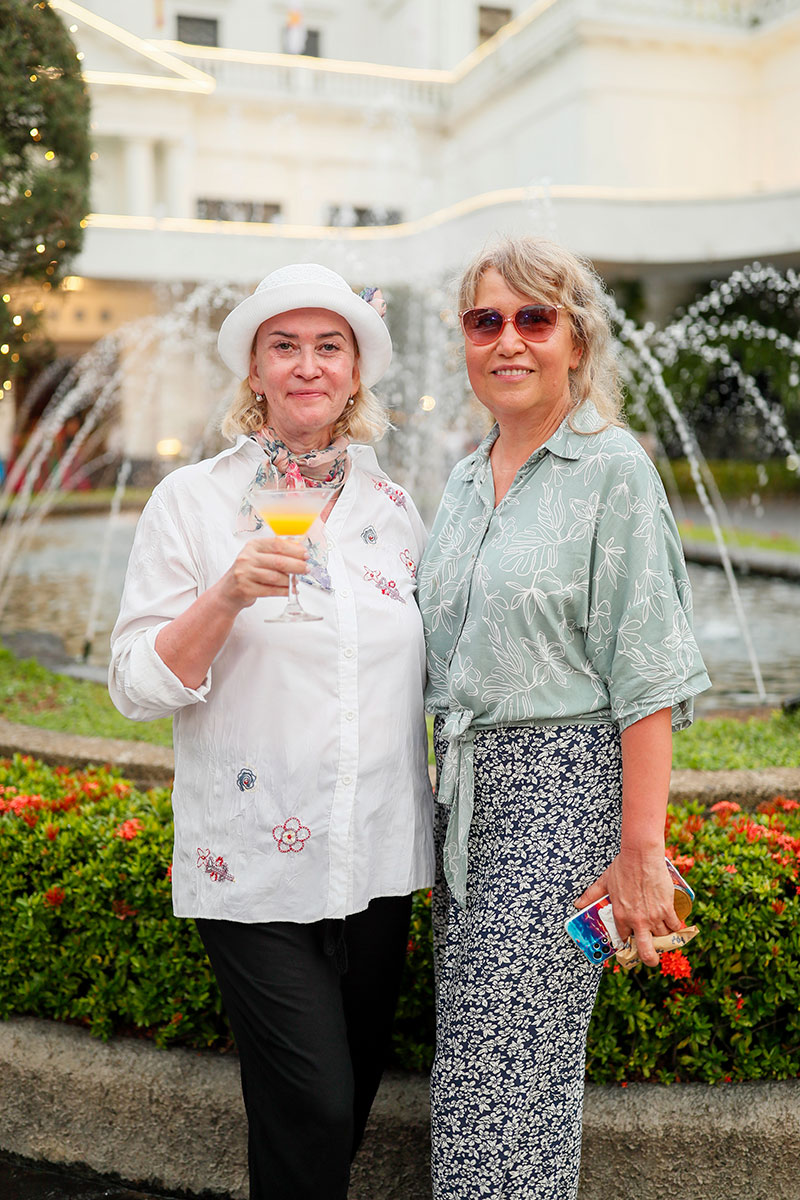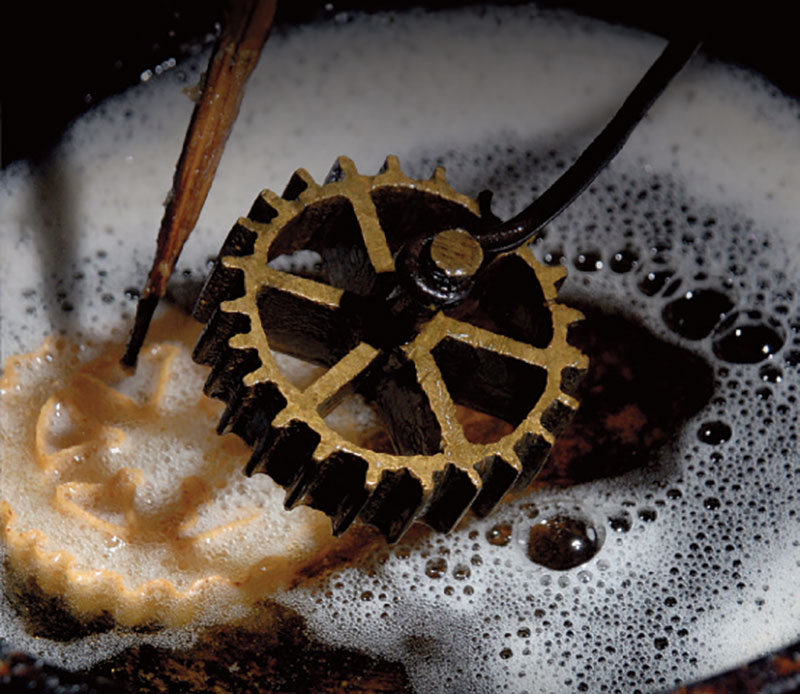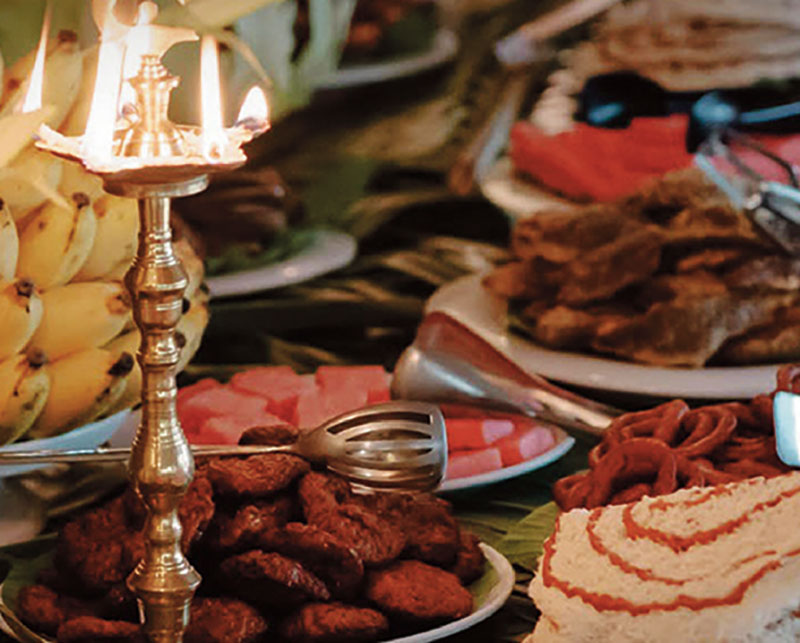Life style
Kevum – Befitting a King

The avurudu table of any Lankan home is complete only when it is laden with kevum. Dating back to ancient times, many types of kevum are chronicled even in our classical texts. The Dutch rulers of the island are said to have relished them, some even asking if they grew on trees… A delicacy which was offered to visiting dignitaries, kevum was revered by our kings even in the battle field not only as an energy-booster but also as a wound disinfectant.
BY RANDIMA ATTYGALLE
The culmination of Avurudu preparations in my childhood with my grandparents was marked by the ritual of Kevum-making. Athamma would ‘book in advance’ the kevum specialist Soida Hami (Soida aachchi to us children), and install a special hearth in her back verendah for the grand moment. I would watch Soida aachchi in wonderment as her thick batter of rice flour and best of kithul treacle shaping into kevums in a hot wok of coconut oil. The long kevum koora in her nimble fingers would achieve the feat of the perfect konde. It was almost a rite of reverence, so much so I was not supposed to talk to her until the first batch of Konda-kevums was completed. Like many old-folk of her vintage, Soida aachchi believed that talking while the first few kevums are done would result in a flawed product.
She would then place each perfect Konda kevuma on a banana leaf for the excess oil to drain. Once the whole exercise was completed, she would place Konda-kevum in large earthen pots and store them in the dum messa or the storage area above the main hearth of the kitchen. She would spare me only one kevuma and the rest had to wait until the auspicious time on avurudu day!
Travellers’ records
Robert Knox an English sailor who was held in captive in the court of the Kandyan King Rajasinghe II and one of the prolific chroniclers of ancient Ceylon in his famous work, An Historical relation of the Island Ceylon documents on the sweet meats of Lankans with a special account of kevum.
‘They have several sorts of sweet-meats. One they call Caown. It is like to a fritter made of Rice-flower and Jaggory. They make them up in little lumps and lay them upon a leaf, and then press them with their thumbs and put them into a frying-pan and fry them in Coker-nut Oyl or Butter. When the Dutch came first to Columba, the King ordered these Caown to be made and sent to them as a royal treat. And they say, the Dutch did so admire them, that they asked if they grew not upon trees, supposing it past the Art of man to make such dainties.’ (Spelling as in the original Knox)
The account of Knox enables rich insights into this wonder of a sweet meat which enthralled many a traveller to the island including dignitaries. The European trader Cosmas who visited Ceylon in 545-550 AD, documents that along with gems, Kevum and Kalu dodol from Ceylon were taken to the Roman court of Emperor Claudius during the sixth century.
- Mun kevum
- Konda kevum
- Athirasa
Classical literature
Kevum dates back to ancient times and our classical texts such as the Ummagga jatakaya, Pujawaliya and Saddharma Ratanawaliya bear evidence to this fact. “Originally known as poopa this sweet meat came to be known as kevum in the Dambadeniya-Kurunegala era. Jathaka atuwa getapadaya mentions 18 kinds of sweet-meats found in the ancient Sri Lanka and among them are several types of kevum such as sendi kevum, mal kevum, athirasa, pena kevum, raa-kevum,” says Prof. Kusumalatha Lankamulla from the Department of Sinhala and Mass Communication at the University of Sri Jayewardenepura.
This scholar with research interest in Culture, Traditional and Modern Literature goes onto note that Mahawamsa in its 32nd chapter refers to two types of kevum in the context of alms offered by King Dutugemunu. The two types- thel kevum and maha de kuvum mentioned, were fried in ghee. “Many of our classical texts mention kevum in multiple festive contexts beyond avurudu. In Ummagga jathakaya, kevum is mentioned as a fitting gift to be taken when visiting parents. Saddharma Ratanawaliya refers to boxes of kevum or kevum pesa.“
An energy booster
Among the popular kevum types found today are Konda kevum, athirasa, mun-kevum, naran kevum and hendi-kevum. Although the ingredients used for each type may slightly differ, rice flour and treacle (now largely replaced with sugar) remain common to all. The much sought after Konda kevum which is relatively a later addition to the range of kevum found here at home is believed to have originated during the Kandyan period says Prof. Lankamulla. “During the Kandyan period, men were prohibited from cutting their hair off and they had to tie it in form of a knot on top of their heads. Konda kevuma is believed to have been inspired by this practice.”
Traditionally, Sinhalese soldiers were given a bag of kevum when going to war. History has it that King Dutugemunu went a step ahead and used kevum to treat wounded soldiers. His army used to prepare kevum months in advance and keep them exposed to air so that the mould can grow on them.
This mould in today’s language had ‘antibiotic properties’ and was used on the wounds of the soldiers to prevent them from festering. “In a bid to undermine the pride of place given to kevum as a super food by the locals, the British coined the famous derogatory adage: ‘Sinhalaya is a fool but is an ace at eating kevum’. (Sinhalaya modaya-kevum kanna yodaya)
Steeped in tradition
Superstitious beliefs surrounding the process of kevum-making are not uncommon and these vary from region to region in the island, says Prof. Lankamulla. Regardless of the region, several common traditions were followed by our ancestors and these still continue to be observed in several parts of the country, she says. “The frying pan with coconut oil to prepare the kevum was kept on fire at an auspicious time and village matriarchs who were highly skilled were mobilized for the occasion. Women also believed that they must refrain from talking when the first kevum is being made. For centuries, the first kevum was considered to be the ‘konduru kevum’, dedicated to the sledge-fly or the konduruwa. The village women would hang the first kevum up for the insects so that the rest would be unspoilt.”
With the passage of time, many Lankans, particularly city-dwellers depend on commercially available avurudu kevili including kevum. Although kevum is synonymous with avurudu, today people get to enjoy it round the year thanks to many sweet meat kiosks found in cities. Although these outlets have best sales during avurudu, they get plenty of orders from Lankans travelling abroad or coming home for vacation at other times of the year as well.
One such die-hard kevum fan is Uthpala Ranatunga from Ottawa, Canada. “My Loku amma (oldest aunt) makes it a point to pack me a parcel of best quality Konda kevum to take with me whenever I’m in Sri Lanka for a vacation.
I deep-freeze them for longer use and eat them sparingly,” says Uthpala to whom kevum is always a strong reminder of home. “Each time I indulge in them I feel nostalgic and miss home.”
Kevum is an integral part of the Lankan culture, finding its way from ancient classical literature to that of the contemporary including children’s literature and arts. The much-loved sweet meat is celebrated in the work of Sybil Wettasinghe – the iconic story teller and illustrator.
Come avurudu, we often hear the intonation of Lionel Ranwala, the eminent musician, vocalist and an authority on Sri Lankan folk music, whose tribute to the enduring legacy of this delicacy is one of the best in our times:
Me avurudu kale -sinaha weyan rale
Thel ihirunu kewum gediya wage…
Life style
Mount Lavinia Hotel unveils spectacular “Avurudu Maha gedara”
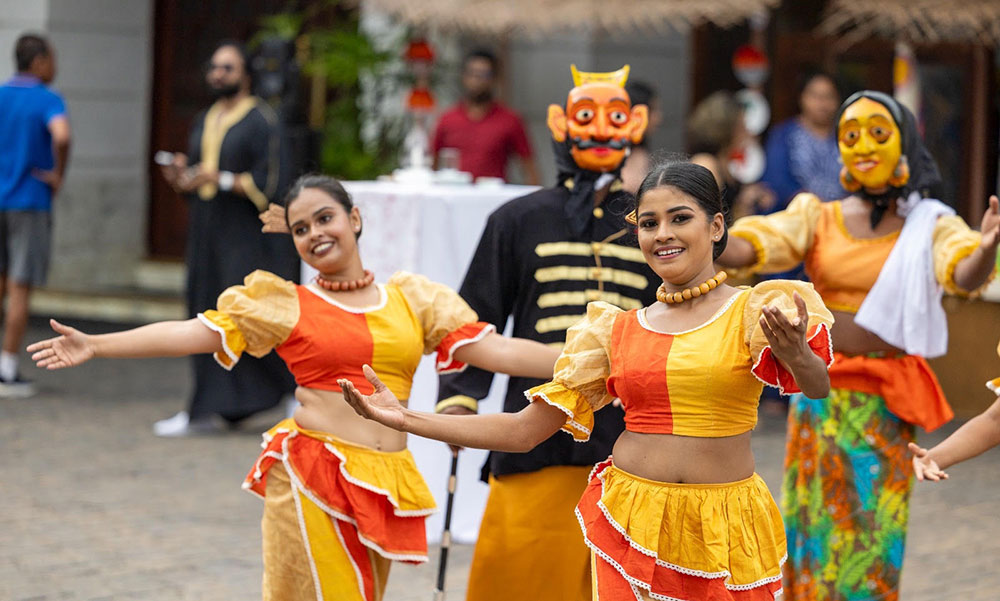
Mount Lavinia Hotel, known as “Galkissa Maha Hotalaya had thier “Avurudu Maha Gedara” celebration for the 2025 Sinhala and Tamil New Year. This year’s festivities were spectacular, with the iconic Chef Publis Silva at the helm of the culinary offerings.
The concept of “Avurudu Maha Gedara” – the grand ancestral home where families gather during New Year – perfectly embodies Mount Lavinia Hotel’s role as a cultural cornerstone in the community. Just as in the traditional village “Maha gedara” welcomes extended families, the historic hotel opens its doors to all Sri Lankans and visitors wishing to experience authentic New Year traditions.
“Avurudu Maha Gedara at Mount Lavinia Hotel is more than just a celebration – it’s our way of preserving and sharing Sri Lanka’s rich cultural heritage,” says Anura Dewapura, Chief Operating Officer of Mount Lavinia Hotel Group. “We take pride in creating a space where families and friends can come together to experience the joy and traditions of the New Year in an authentic setting that honors our collective past while creating new memories.”
Grand Kavili Kade opening and Avurudu market
The celebrations kicked off with the grand opening of the Kavili Kade (sweetmeat shop) on Sunday, April 6th at 4:30 PM. Visitors were treated to a vibrant cultural spectacle featuring traditional dancing, music, games, and dramatic performances. Distinguished guests including corporate partners, business associates, ambassadors, and media representatives attended this colorful inauguration.
The hotel’s courtyard was transformed into an eco-friendly Avurudu Market, showcasing special New Year items, homeware, and decorative pieces. Following the grand opening, the Kavili Kade will welcome guests daily from 10 AM to 8 PM until April 13th.
Exquisite Kavili hampers
For those looking to bring the flavors of Avurudu home, Mount Lavinia Hotel has curated three distinctive kavili hampers named after beloved Sri Lankan flora:
The premium Erabadu Hamper – the most comprehensive sweetmeat collection
The Ehela Hamper – a delightful mid-range offering
The Bakmee Hamper ) – a perfect introduction to traditional treats
Each hamper can be delivered directly to your doorstep, making them ideal both for family celebrations and as meaningful gifts during the New Year season.
“Feast of the Nation” – A Culinary Journey Across Sri Lanka
On Avurudu Day, Mount Lavinia Hotel will host its renowned “Feast of the Nation” lunch buffet, celebrating Sri Lanka’s diverse culinary heritage. At , this extraordinary buffet transcends ethnic boundaries, offering a comprehensive journey through the island’s rich culinary landscape. The feast features authentic dishes from every corner of Sri Lanka, bringing together the distinct flavors and cooking traditions that represent the country’s multicultural identity in one magnificent spread.
“The Avurudu celebration at Mount Lavinia Hotel represents the true spirit of Sri Lankan unity,” Dewapura continued. ” Through our traditional foods, we honor the cultural tapestry that makes our nation so special.”
Mount Lavinia Hotel’s “Avurudu Maha Gedara” welcomes Sri Lankans of all ages and backgrounds to experience the rich traditions of the New Year in the magnificent setting of this historic landmark.
For reservations and inquiries, contact Mount Lavinia Hotel at 0112 711 711.
Life style
Celebrate Avurudu in grand style
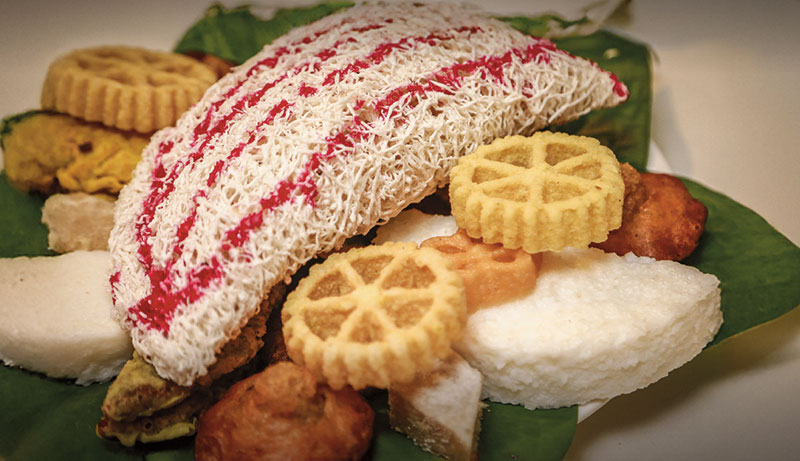
This April, Cinnamon Grand Colombo brings the joyous essence of Avurudu alive with a line-up of delightful culinary experiences, cultural festivities, and memorable moments for the whole family. Here’s how you can celebrate the Sinhala and Tamil New Year with flavour, tradition, and warmth said the press release.
New Year vibes
The release said experience the sights, sounds, and smells of a truly Sri Lankan New Year from 12–15 April 2025, starting from 5 PM onwards at the Lobby.
Watch live demonstrations of traditional sweetmeats being made, like kawum and kokis, and enjoy the rhythmic beats of raban drums as the hotel lobby transforms into a celebration of Avurudu culture.
Lobby – Cinnamon Grand Colombo
12–15 April, from 5 PM onwards
Call +94 11 247 3494 for details
Celebrate Avurudu Tradition and taste at Nuga Gama
On 14 April 2025, step into a truly authentic village-style Avurudu celebration at Nuga Gama. Starting at 8 AM, guests can enjoy a lavish Kavili Table and Lunch Buffet filled with traditional sweets and festive Sri Lankan dishes.
There’ll also be Avurudu games and vibrant activities to keep the whole family entertained.
Life style
Celebrate Sinhala and Tamil New Year at Sun Siyam Pasikudah’s Festival of the Sun
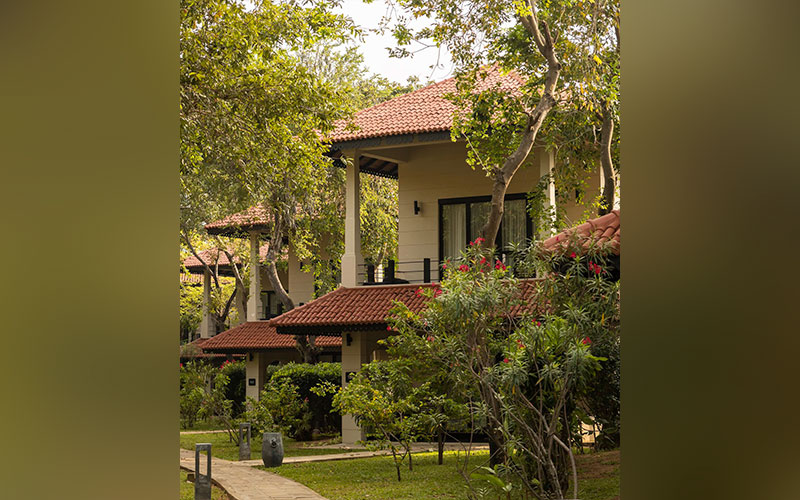
This Sinhala and Tamil New Year, step away from the ordinary and embrace the spirit of Avurudu at Sun Siyam Pasikudah with the joyous rhythms of tradition, community, and coastal serenity, under the vibrant theme, Festival of the Sun said a press release
Set along the golden shores of Pasikudah, the luxury five-star beach resort transforms into a festive haven where timeless rituals meet joyful recreation. From traditional ceremonies to fun-filled family games, guests are promised an unforgettable experience that captures the heart of Sri Lankan heritage, celebrating the essence of togetherness, gratitude, and renewal release said.
As the sun rises to mark the dawn of the New Year, guests will witness the symbolic milk boiling ceremony—a sacred ritual signifying prosperity and new beginnings. The preparation of the Kavili Mesaya, or traditional sweet table, will follow—featuring a colourful spread of mouthwatering Avurudu treats like kokis, mung kavum, aluwa, and konda kavum. The celebration continues with a ceremonial oil lamp lighting, setting the tone for a day rooted in cultural elegance and island warmth.
The Kids’ Corner is all set to light up with playful delights such as Breaking Balloons and Placing the Eye on the Elephant, promising giggles and memories for the little ones. Families and groups can bond over light-hearted yet lively games including Fill the Bottle by Hand, Sack Races, and the ever-popular Musical Chairs—guaranteed to spark friendly competition and lots of laughs.
For those seeking a thrill, competitive events like Tug of War (Ladies vs Gents), Pillow Fight, and the classic Blindfolded Pot Breaking are sure to bring out the festive spirit in full force.
While the Avurudu festivities steal the spotlight, Sun Siyam Pasikudah continues to charm guests with its signature blend of tropical luxury and authentic Sri Lankan hospitality.
-

 News5 days ago
News5 days agoSuspect injured in police shooting hospitalised
-

 Features6 days ago
Features6 days agoRobbers and Wreckers
-

 Business5 days ago
Business5 days agoSanjiv Hulugalle appointed CEO and General Manager of Cinnamon Life at City of Dreams Sri Lanka
-

 Business6 days ago
Business6 days agoBhathiya Bulumulla – The Man I Knew
-
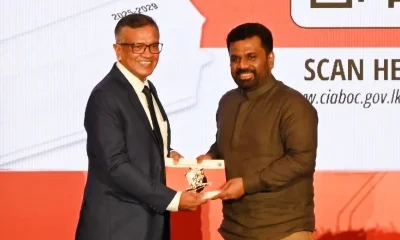
 Business7 days ago
Business7 days agoNational Anti-Corruption Action Plan launched with focus on economic recovery
-

 Features4 days ago
Features4 days agoLiberation Day tariffs chaos could cause permanent damage to US economy, amid global tensions
-
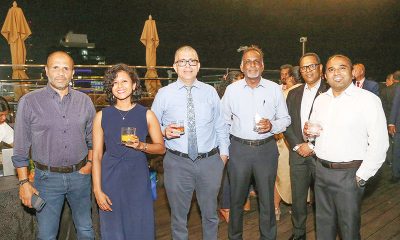
 Business4 days ago
Business4 days agoMembers’ Night of the Sri Lanka – Russia Business Council of The Ceylon Chamber of Commerce
-
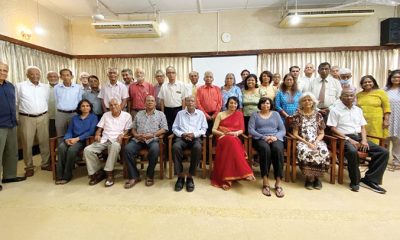
 Features4 days ago
Features4 days agoMinds and Memories picturing 65 years of Sri Lankan Politics and Society

